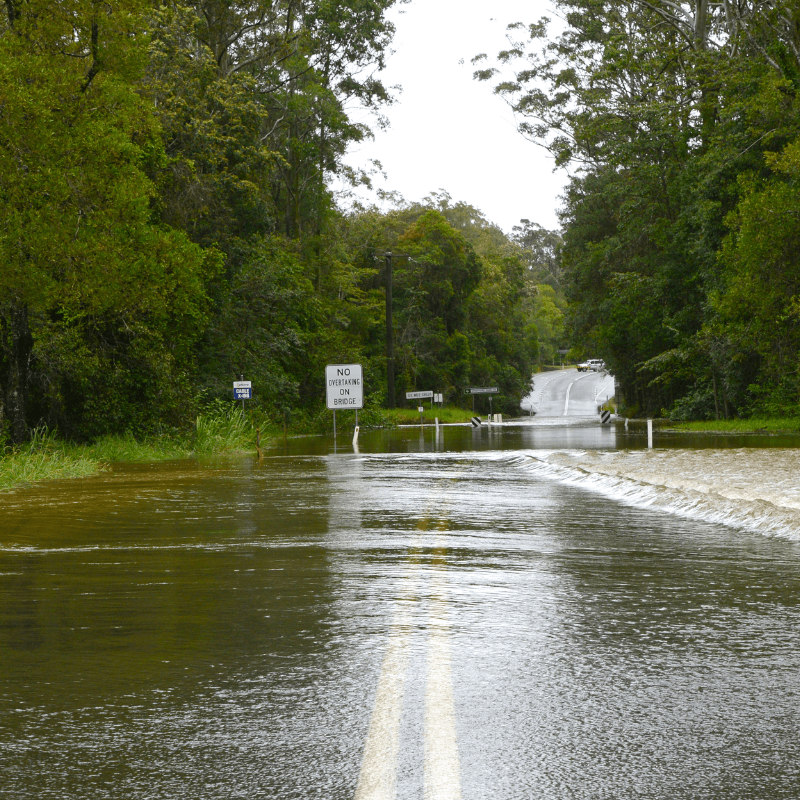Your Essential Guide to Preparing for Emergencies
The high-risk weather season from October to April is fast approaching, bringing with it the potential for floods, bushfires, cyclones, storms, and heatwaves. For older people and vulnerable Australians, taking the time to prepare or update an Emergency Plan now can make a huge difference when severe weather events occur.
Why Plan Ahead?
Extreme weather can strike suddenly, and having a plan ensures that you, your loved ones, and your home are protected. Knowing what to do in an emergency—be it evacuating, gathering essential supplies, or securing your property—can save precious time and reduce the stress of responding to a crisis.
If you have vulnerable family members, friends, or neighbours, now is the perfect time to check in to see if they also have a plan. Whether it’s assisting them with creating their own plan or offering your support during an emergency, helping those who need it most can prevent last-minute panic and keep everyone safe.
Key Steps to Prepare Your Emergency Plan
Step 1: Know Your Local Risks
Are you more likely to face bushfires, floods, storms, or cyclones? Understanding the specific threats in your area is the foundation of your Emergency Plan. This way, you can tailor your plan to address the most relevant risks.
- Tip: Use local council resources or emergency websites to identify the weather-related risks in your community.
Step 2: Prepare Your Home
Taking steps to protect your home ahead of time can greatly reduce the risk of damage and keep you safe during extreme weather. Safety measures like clearing gutters, securing loose items, and trimming back trees are essential. These actions help prevent fires from spreading to your home and reduce the chance of damage during floods or strong winds.
Beyond securing the outside, it’s just as important to prepare inside. Create an emergency kit with essential items and store it in a safe but easily accessible place in case you need to leave quickly.
- Tip: Your kit should include essentials like bottled water, non-perishable food, medications, a first-aid kit, flashlights, extra batteries, important documents, and a change of clothes.
Step 3: Plan Your Communication and Stay Informed
In an emergency, staying connected with loved ones, emergency services, and up-to-date information is critical. Set up a communication plan with your family or friends, including how to keep in touch, where to meet if evacuation is required, and what to do if communication lines go down.
To help you stay informed, sign up for local weather alerts and have multiple ways of receiving emergency updates, such as mobile phones, battery-powered radios, or local community warning systems.
If your mobile phone is your main source of communication, it’s crucial to plan for power outages. Consider investing in portable chargers, power banks, or car chargers to keep your phone charged during extended power loss.
- Tip: Keep a list of emergency contacts handy, and ensure everyone in your household knows the communication plan. Make sure you have reliable ways to receive emergency alerts, and regularly check for updates.
Step 4: Make a Health and Safety Plan
A health and safety plan is vital, especially for older and vulnerable people. Remember to have enough medications, medical supplies, and assistive devices to last for at least several days. Consider how you will access medical care if services are disrupted, and plan for any power outages if you rely on medical devices.
Home care services may be unable to reach you due to road closures or other issues, so your Emergency Plan should also include an evacuation plan. Don’t wait until the last minute—plan to have a safe place to evacuate to. Ask a family member or friend if they can provide shelter in an emergency, or find out where your local designated evacuation centres are, ensuring they meet your health and mobility needs.
- Tip: Write down important medical information, including medications, dosages, allergies, and doctor contact details. Keep this information in your emergency kit, and be ready to take it with you if you need to evacuate.
Step 5: Support Vulnerable Loved Ones
If you have vulnerable family members, friends, or neighbours, ensuring they have their own plan is a good idea. Offer assistance in developing their Emergency Plan, and include them in your communication plan if needed. Don’t forget to account for the welfare of pets during an emergency, making sure there’s a plan for their safety as well.
- Tip: Check in with loved ones before and during emergencies to confirm they, along with their pets, are safe and have everything they need.
Need Help with Your Plan? Simply Helping Can Assist
If you or your loved ones are unsure where to start or if no one else can assist, Simply Helping is here for you. Our friendly and experienced team can help you create a practical and thorough Emergency Plan, giving you peace of mind that you’re prepared for whatever comes your way.
Click here to find a Simply Helping team near you.
Having an Emergency Plan in place isn’t just about being organised—it’s about staying safe and protecting what matters most when the unexpected happens.







